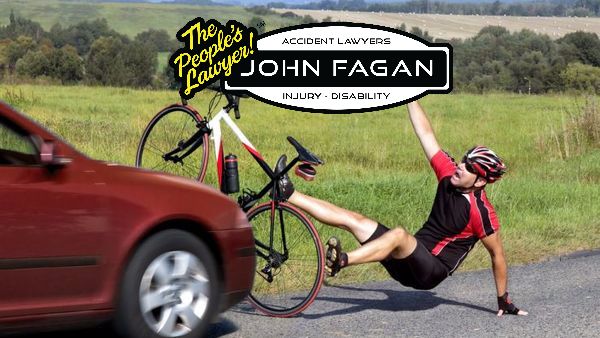If you have car insurance, your uninsured and underinsured coverage may help with losses from a collision with a vehicle. (Photo: Shutterstock)
Editor’s Note: Insurance agents and brokers often have P&C insurance clients that are avid cyclists. Here’s an article to share that offers helpful tips for dealing with an auto/bicycle collision.
A bicycle crash, even if not serious, can be a traumatizing event.
While job one in a crash is preserving life and preventing further injury, other issues need to be attended to quickly.
This article is written assuming you are a cyclist who was struck by a vehicle, but much of the same advice applies to crashes in other situations. Naturally, where someone else suffered physical or property damage, you will need to be extra careful about making oral or written statements, as you may become a defendant at some point.
1. Medical attention
You need to see a doctor to ascertain the extent of your injuries and, of course, get any treatment you need. This is key to building any potential legal case. You can obtain medical records to bolster any injury claims. No doubt if you do not go to the doctor or do so after some delay, the opposition will point that out. You should be aware that some medical problems may not be obvious to you so go to the doctor right away to get checked out.
2. Capture evidence
Take pictures of your bike, your helmet if it is damaged, your injuries, whatever you impacted or impacted upon you, the street, and any relevant signage. Always carry a phone with a camera when biking on public streets and paths.
Obtain the names and contact information of witnesses and the driver and passengers of the vehicle if one was involved in the accident. Call the police as they will gather evidence as well. Stay until the police arrive, as you could be liable for a hit and run yourself if you leave the scene of the accident. If you are unable to help with gathering evidence, see if a friendly witness can get pictures and information before it disappears.
Related: 6 tips for at-the-scene photography by auto claimants
3. Call the insurance company
If you have car insurance, your uninsured and underinsured coverage may help with losses from a collision with a vehicle. A number of car vs. bicycle crashes are hit and runs, so your own car insurance may be all the coverage you have. Not only have hit and run accidents increased, about 80% of them go unsolved, according to this LA Times article.
If you are biking as part of your employment, you would also report the incident to your employer because they likely require you to do so for worker’s compensation purposes. Your homeowner’s or renter’s insurance may have coverage, so call them too.
4. Don’t make statements
You have just been traumatized so you might not be thinking clearly and you probably do not understand all of the facts yourself at this point. Do not make statements or get into arguments with the driver of the car. These statements can be used against you later. You may even end up as a defendant in a civil or criminal case depending on the circumstances.
Related: Insurance for high-end bikes
Take the example of Nako Nakatsuka: She was a UCLA graduate student and member of the UCLA triathlon team when a driver struck her bicycle from behind. She had to hire attorneys to represent her because the driver claimed she backed into them and the driver demanded payment. For some reason, the LAPD never filed a report which complicated her case.
Never assume you won’t be sued. Do not talk to the driver’s insurance company without talking to a lawyer first. You need to cooperate with the police (unless there is some reason to believe you are the cause of the accident — then call a lawyer before talking to anyone) to help document what happened.
5. Call a lawyer
Many personal injury lawyers will give a free consultation. If you do not have a case, they will likely tell you. So, be safe instead of sorry and get a legal opinion about your case before making damaging statements or giving away rights you did not know you had.
If you are accused of breaking the law, you do not want a statement you made in a moment of confusion later being used against you. If it turns out the damage isn’t serious enough to involve a lawyer, you may be able to settle with the driver or insurance company directly.
The evidence you gathered will make that much more likely to be successful. If they do not cooperate with settlement, you can bring them to conciliation (small claims) court.
A bicyclist has to be vigilant in protecting their rights, as public attitudes (and therefore juror attitudes) toward bicyclists, are not good, as revealed in an article from Plaintiff Magazine. Being in a crash is awful, but taking the steps above can help limit the damage done and overcome the obstacles to legal recovery for bicyclists.
Related: Bicycle insurance: 5 myths and misconceptions
Shaun G. Jamison is associate dean of faculty at Concord Law School at Kaplan University and an avid cyclist. Twitter: @shaunjamison.






